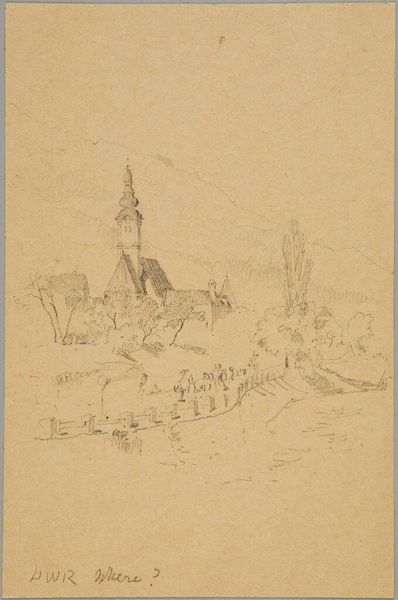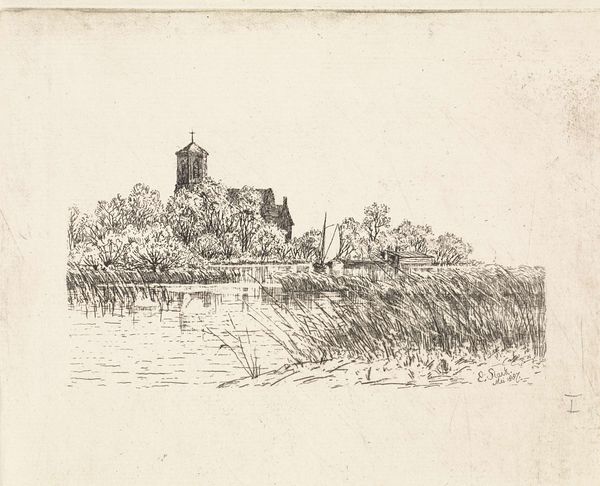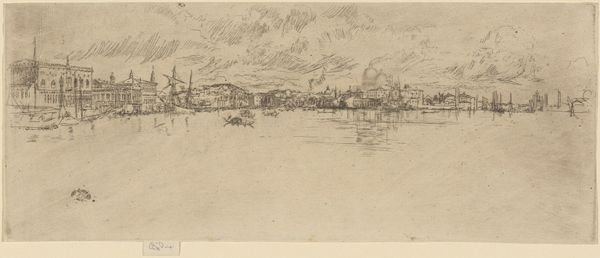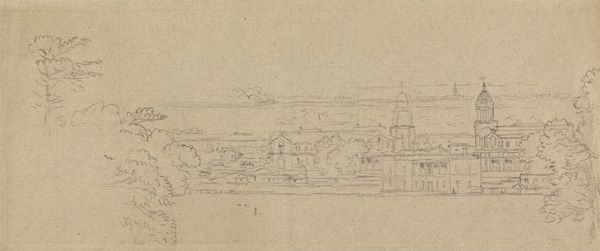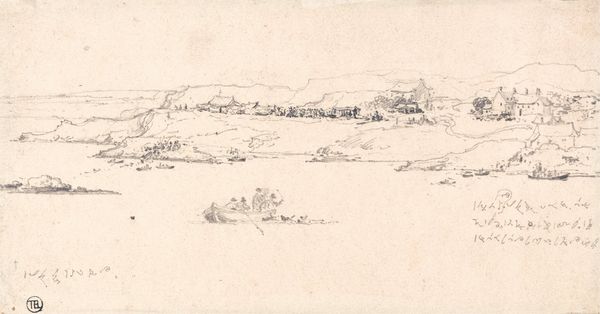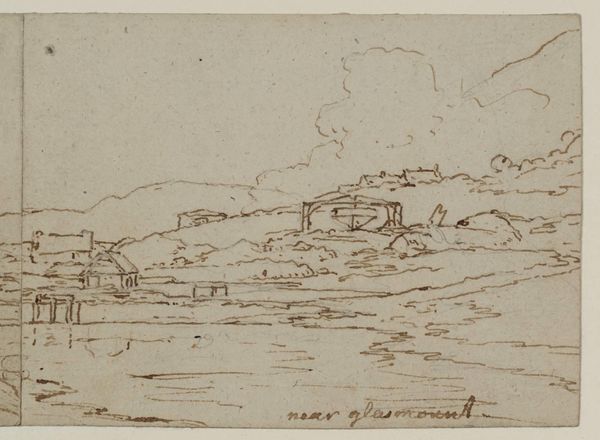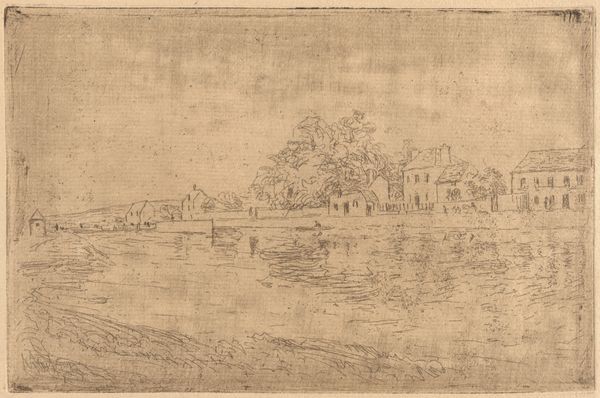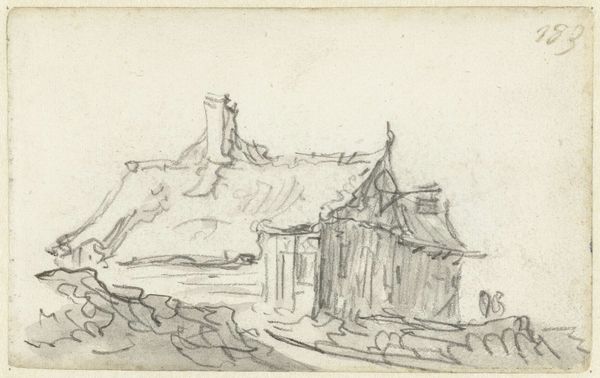
drawing, print, etching
#
drawing
# print
#
etching
#
landscape
#
etching
#
line
#
cityscape
#
realism
Copyright: Public Domain: Artvee
Curator: Alright, next up we have James Abbott McNeill Whistler's "Windsor Castle" from 1887, rendered in etching. What catches your eye initially? Editor: It’s surprisingly delicate. The sparseness of the lines almost gives it a ghostly quality, like a memory fading at the edges. What were some of Whistler's technical priorities, looking at this as a material object? Curator: Whistler was intensely focused on printmaking. This etching exemplifies his focus on the labor-intensive and meticulous aspects of the printmaking craft itself; etching allowed for a fine line, almost mimicking a drawn line, giving it an accessible aesthetic in the mass-produced print format. Whistler, despite aligning with aestheticism, demonstrates in his processes a clear reverence for working-class forms and practices. Editor: Interesting. Viewing it through the lens of power, consider the choice to depict Windsor Castle. It's a potent symbol of British monarchy and colonial dominance. I see the wispy lines not just as aesthetic choices, but perhaps as a subtle commentary on the instability or even fragility of such institutions. Curator: The scale is quite small, almost unassuming. Does that influence your reading? Editor: Absolutely. This miniaturization is itself a form of critique. Instead of grandiosity, we get intimacy, but also perhaps a quiet suggestion that these massive structures, these institutions, can be reduced, made manageable, questioned. Etching enabled the mass distribution of a usually exclusive or unaccessible image, creating, perhaps unintentionally, an instrument of popular cultural awareness or possibly rebellion. How do you read it in the context of artistic trends at the time? Curator: Realism was waning, but there was still an intense interest in depicting cityscapes, or even landscapes, that reflected modernity. By using a craft based media like etching to replicate the castle, Whistler's making a visual statement of access. Printmaking had also always allowed for subtle deviations. What seems to me to be present in "Windsor Castle" is also an expression of what artistic labor could achieve at a critical moment in Britain's transition into modernism. Editor: I’m intrigued by your insights on labor. Ultimately, this tiny window offers a powerful meditation on power and impermanence. I’m struck by its accessibility. Curator: Yes, a quiet, almost radical, commentary emerges from what initially appears to be a demure etching. A good piece for closing this section.
Comments
No comments
Be the first to comment and join the conversation on the ultimate creative platform.
